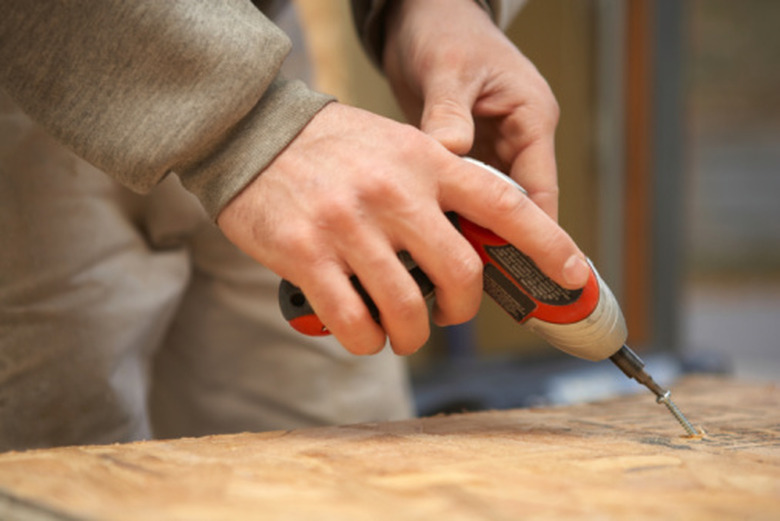Homemade Altitude Chamber
A high-altitude or hypobaric chamber mimics the environment found high above sea level. High altitudes such as those at the tops of mountains have low ambient air pressure and low levels of oxygen. Therefore humans and devices will function and work differently there than at sea level. Instructors train pilots, flight crews and athletes in high-altitude chambers. You can experiment with the effects of high altitude by making your own hypobaric chamber — a much easier task than transporting your equipment to the top of a mountain.
Step 1
Drill two holes on the side of the stainless steel bowl using a drill. The holes should be about 1/4 inch in diameter, as they are needed for the 1/4-inch brass hose barbs. Practice finding the exact size of hole you need by drilling holes in a piece of spare plastic. If in doubt, start with a small hole and then gradually make it bigger until the barbs fit.
Step 2
Mix the epoxy together and spread it around the brass hose barbs. Insert the barbs into the drilled holes and allow for the epoxy to cure completely.
Step 3
Place a rubber gasket on top of a 5-liter stainless steel mixing bowl. Use a gasket that it sits along the entire edge of the mixing bowl. The gasket allows for the two bowls to form an airtight seal. It is a good idea to bring the mixing bowl with you when you purchase the gasket at the hardware store so you can buy one that fits properly.
Step 4
Turn a Pyrex mixing bowl, similar in size to the stainless steel bowl, upside down. Place the edge of the upside-down Pyrex bowl on top of the gasket on the edge of the stainless steel bowl.
Step 5
Connect a vacuum regulator to the dry vacuum pump by screwing it tightly into place. Tighten it as much as you can by hand, then use a wrench to tighten it further.
Step 6
Push one end of 1/4" flexible tubing over one of the hose barbs in the stainless steel bowl. Insert the hose barb into the tube opening. Make sure the tubing covers at least two of the notches on the hose barb. The other end of this 1/4" tubing connects to the vacuum regulator on the vacuum pump. The tube goes over the regulator bar just like the hose bar in the stainless steel bowl.
Step 7
Connect a second length of 1/4-inch tubing to the second hose barb in the stainless steel bowl. Run this tubing to the inside of a vacuum gauge. The vacuum gauge will have a barb like the hose barb in the bowl. Attach the tubing in the same way to the "in" side of the gauge. The gauge will have an arrow running across the body to show in which direction it should be placed. The "in" side is the back end of the arrow and the "out" side is the pointy end of the arrow.
Step 8
Connect a needle valve and filter to the vacuum gauge using a short length of 1/4-inch tubing. Connect the tubing from the "out" side of the gauge to the needle valve in the same way as in previous steps.
Step 9
Turn the vacuum pump on and adjust the vacuum regulator for a specific flow of air moving out of the bowl. Check the gauge and stop pumping when you achieve the desired altitude or pressure. Check an altitude chart for the pressure at different altitudes. If the altitude chamber is not at sea level, you will need to make a correction for your current altitude.
Things Needed
- Drill with drill bits
- 5 liter stainless steel bowl
- 5 liter Pyrex bowl
- Rubber gasket
- Two 1/4-inch brass hose barbs
- Epoxy
- Vacuum pump
- Vacuum regulator
- Vacuum gauge
- Needle valve and filter
- 3 lengths of 1/4-inch flexible tubing
Cite This Article
MLA
Tomas, Liz. "Homemade Altitude Chamber" sciencing.com, https://www.sciencing.com/homemade-altitude-chamber-7944370/. 24 April 2017.
APA
Tomas, Liz. (2017, April 24). Homemade Altitude Chamber. sciencing.com. Retrieved from https://www.sciencing.com/homemade-altitude-chamber-7944370/
Chicago
Tomas, Liz. Homemade Altitude Chamber last modified March 24, 2022. https://www.sciencing.com/homemade-altitude-chamber-7944370/
